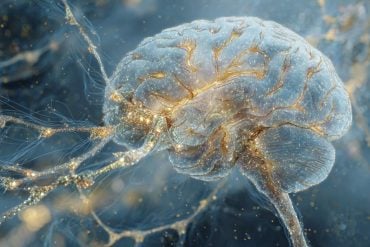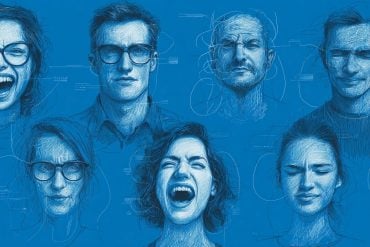Summary: A large-scale study of more than 86,000 Europeans found that speaking multiple languages may help slow biological and cognitive aging. Using artificial intelligence to assess “biobehavioral age gaps,” researchers discovered that multilingual individuals were over twice as likely to show signs of healthy aging compared to monolinguals.
The benefits were cumulative—the more languages a person spoke, the stronger the protection against decline. These findings suggest that language learning is not only culturally enriching but also a powerful, low-cost tool for promoting lifelong brain health and resilience.
Key Facts
- Massive Dataset: Study analyzed 86,149 participants across 27 European countries.
- Protective Effect: Multilinguals were 2.17 times less likely to show accelerated aging.
- Cumulative Benefit: Each additional language provided greater protection against age-related decline.
Source: TCD
Can learning another language help you stay younger for longer?
Far beyond its cultural and social value, speaking multiple languages may protect both brain and body health, slowing down the biological processes of aging and strengthening resilience across the lifespan.
An international study led by Dr. Agustín Ibáñez, Trinity College Dublin and his co-authors Lucia Amoruso, BrainLat and Hernán Hernández, BrainLat, reveals that speaking multiple languages may slow the biological processes of aging and protect against age-related decline.
Published in Nature Aging, the paper titled “Multilingualism protects against accelerated aging in cross-sectional and longitudinal analyses of 27 European countries” analysed data from 86,149 participants across Europe, showing that multilingual individuals experience slower biobehavioral aging compared with monolinguals.
Using the innovative biobehavioral aging clock framework, researchers quantified biobehavioral age gaps (BBAGs), that were estimated using artificial intelligence models trained on thousands of health and behavioral profiles.
These models predict a person’s biological age from features such as physical conditions (hypertension, diabetes, sleep problems, sensory loss) and protective factors (education, cognition, functional ability, physical activity).
The BBAG—the difference between predicted and actual age—indicates whether someone shows younger, healthier aging (negative values) or accelerated aging (positive values.
The study found that individuals from countries where people commonly speak at least one additional language were 2.17 times less likely to experience accelerated aging, while monolinguals were over twice as likely to show early aging patterns. These effects remained significant even after adjusting for linguistic, social, physical, and sociopolitical factors.
The protective impact of multilingualism was consistent across both cross-sectional analyses, reflecting current differences in aging, and longitudinal analyses, showing that multilingualism predicts a lower risk of accelerated aging over time.
Dr. Agustín Ibáñez, senior author, Scientific Director of the Latin American Brain Health Institute (BrainLat), and Professor of Global Brain Health at Trinity College Dublin. “Our results provide strong evidence that multilingualism functions as a protective factor for healthy aging.
“Language learning and use engage core brain networks related to attention, memory, and executive control—as well as social interaction—mechanisms that may reinforce resilience throughout life.”
Lead author Dr. Lucia Amoruso, from the Basque Center on Cognition, Brain and Language and BrainLat, added: “The protective effect was cumulative—the more languages people spoke, the greater their protection against aging-related decline.”
Co-lead author Dr. Hernán Hernández, from BrainLat, highlighted the societal implications: “Our findings show that multilingualism is an accessible, low-cost tool for promoting healthy aging across populations, complementing other modifiable factors such as creativity and education.”
This large-scale epidemiological investigation marks a major step toward global brain-health strategies that integrate cognitive, social, and cultural factors. The authors advocate for incorporating language learning into public health and educational policies to enhance cognitive resilience and reduce the societal burden of aging.
Key Questions Answered:
A: People who speak more than one language show slower biological and behavioral aging compared to monolinguals.
A: Using AI-based biobehavioral aging clocks that estimate biological age from health and lifestyle data across 27 European countries.
A: Multilingualism engages brain regions tied to memory, attention, and social interaction, helping build lifelong resilience and protect against age-related decline.
About this language and aging research news
Author: Ciara O’Shea
Source: TCD
Contact: Ciara O’Shea – TCD
Image: The image is credited to Neuroscience News
Original Research: Closed access.
“Multilingualism protects against accelerated aging in cross-sectional and longitudinal analyses of 27 European countries” by Agustín Ibáñez et al. Nature Aging
Abstract
Multilingualism protects against accelerated aging in cross-sectional and longitudinal analyses of 27 European countries
Aging trajectories are influenced by modifiable risk factors, and prior evidence has hinted that multilingualism may have protective potential.
However, reliance on suboptimal health markers, small samples, inadequate confounder control and a focus on clinical cohorts led to mixed findings and limited applicability to healthy populations.
Here, we developed biobehavioral age gaps, quantifying delayed or accelerated aging in 86,149 participants across 27 European countries.
National surveys provided individual-level positive (functional ability, education, cognition) and adverse (cardiometabolic conditions, female sex, sensory impairments) factors, while country-level multilingualism served as an aggregate exposure.
Biobehavioral factors predicted age (R2 = 0.24, r = 0.49, root mean squared error = 8.61), with positive factors linked to delayed aging and adverse factors to accelerated aging.
Multilingualism emerged as a protective factor in cross-sectional (odds ratio = 0.46) and longitudinal (relative risk = 0.70) analyses, whereas monolingualism increased risk of accelerated aging (odds ratio = 2.11; relative risk = 1.43). Effects persisted after adjusting for linguistic, physical, social and sociopolitical exposomes.
These results underscore the protective role of multilingualism and its broad applicability for global health initiatives.







